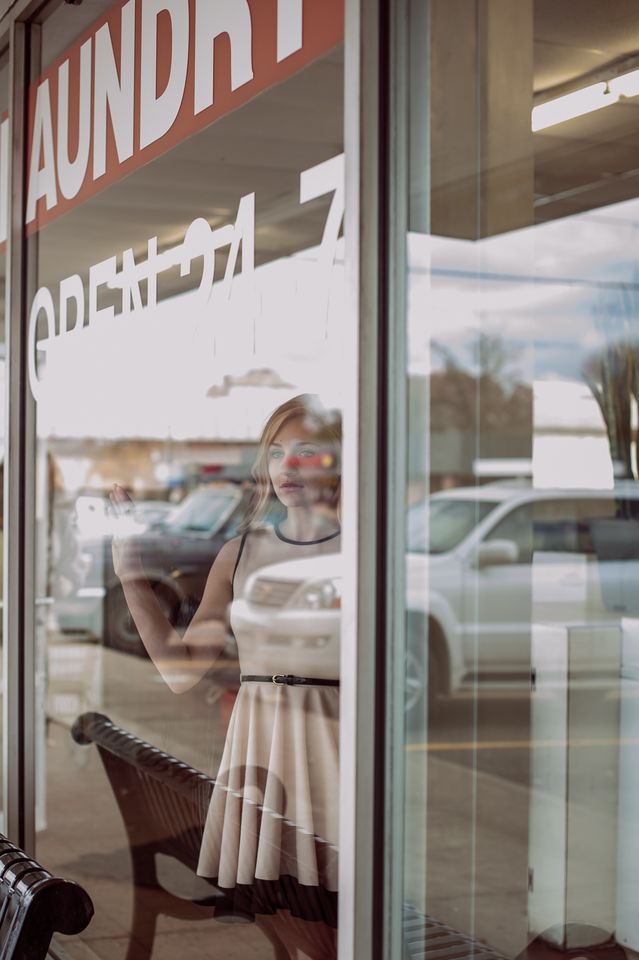Trauma
A Body of One's Own
On the need to break free from the trap of self-objectification
Posted December 29, 2017

The “me too” movement opened people’s eyes to forms of sexual assault and harassment that many, if not most, women experience in this culture. It alerted people to a toxicity that was not explicitly registered as a serious problem in the minds of most Americans. While attention to assault and harassment is long overdue, it runs the risk of disappearing or minimizing the more subtle but nevertheless pernicious effects of the same oppressive system. The same cultural dynamics that fuel sexual harassment and assault fuel the everyday sexual objectification of women’s bodies. The experience of sexual objectification is such a taken for granted part of living as a woman in this culture that we rarely stop and explicitly consider the psychological damage that such objectification can cause.
While harassment and assault can easily be viewed as potentially traumatizing, we might also view sexual objectification as a more subtle form of trauma that can result in some degree of dissociation from one’s own bodily experience. I don’t want to overuse and therefore cheapen the term “trauma,” but if we understand trauma to be a rupture to a person’s ability to feel at home in their body and the world, then we might take more seriously the effects of everyday sexual objectification. Experiencing the objectifying gaze on one’s flesh, again and again, beginning at a young age – while one is the process of coming to understand who one is, what one’s worth is, and what one’s place is in the world – can result in a rupture. This rupture is a “problem with no name” that requires naming in order for any kind of real change to occur.
Being reduced in the eyes of others to a collection of sexualized body parts can have a dehumanizing effect on the person being objectified and can lead to a chronic low-level state of vigilance, a sense of always to some extent being on guard and alert to the eyes of others. This chronic vigilance can be so subtle as to be unrecognizable to the woman or seemingly “natural” to who she is. But even more disturbing is the fact that this vigilance can extend to the woman’s experience of her own body. A person who is routinely objectified over time can come to habitually objectify herself. In addition to being on guard for the external gaze of the other, the objectified can come to chronically monitor and watch themselves. Trapped in a hall of mirrors, their awareness is perpetually thrown back on their own bodies instead of directed toward the world. It’s as if they carry an invisible mirror around with them wherever they go. Though this chronic loop of self-referral – this habitual self-objectification – is sometimes so subtle and can oftentimes feel strangely pleasurable, it is the antithesis of freedom. So many women, to lesser or greater extents, are ensnared in this trap.

French philosopher Simone de Beauvoir addressed this problem back in the mid-20th century in her groundbreaking treatise The Second Sex. Here she describes the adolescent girl’s experience of becoming a woman under the objectifying gaze of others:
The young girl feels that her body is getting away from her, it is no longer the straightforward expression of her individuality; it becomes foreign to her; and at the same time she becomes for others a thing: on the street men follow her with their eyes and comment on her anatomy. She would like to be invisible; it frightens her to become flesh and to show her flesh.
Her body begins to “get away from her” due to the objectifying gaze of the other, which she comes to eventually apply to her own body:
She becomes an object, and sees herself as an object; she discovers this new aspect of her being with surprise: it seems to her that she has been doubled; instead of coinciding exactly with herself, she now begins to exist outside.
This sense of existing outside of oneself – this experience of being doubled – creates a curious dissociation in the girl, involving seeing and feeling from a place that is her own but simultaneously standing apart from herself, watching herself as a man might watch her. We might indeed understand this dissociation as a form of trauma. Some degree of bodily at-homeness and fluidity of movement in the world has been compromised.
This “doubling” cuts to the heart of self-objectification. In his classic book, Ways of Seeing, English art critic John Berger captures this doubling phenomenon beautifully:
A woman must continually watch herself. She is almost continually accompanied by her own image of herself. While she is walking across a room or while she is weeping at the death of her father, she can scarcely avoid envisaging herself walking or weeping. From earliest childhood on she has been taught and persuaded to survey herself continually. And so she comes to consider herself the surveyor and the surveyed within her as the two constituent yet always distinct elements of her identity as a woman.
And here, in this oft-cited passage, as well:
Men act and women appear. Men look at women. Women watch themselves being looked at. This determines not only most relations between men and women but also the relation of women to themselves. The surveyor of woman in herself is male: the surveyed, female. Thus she turns herself into an object – and most particularly an object of vision: a sight.
De Beauvoir wrote the above passage in 1949, Berger in 1990. It’s interesting to consider how things have changed for women since that time, given sociocultural variables such as the rise of pornography and social media. It is even more interesting to consider to what extent this phenomenon may be impacting your own life and what you might do to address it.
Here in A Hut of Her Own we are committed to understanding, articulating, and practicing possible ways out… ways of restructuring habitual modes of being that serve to limit freedom and psychospiritual development. This blog specifically highlights the value of intentional solitude. It champions – for certain people, at certain times of their lives – spending a significant amount of time away from others, in a demarcated space of one’s own, with few distractions (technological and otherwise) in the interest of performing an experiment. The research question that inspires the experiment is: “Who are you when you take away everyday distractions and reminders of who you are in the world?” What happens when you step outside of the everyday matrix for an extended period of time?

What could possibly happen if you were to take away the gaze of others on your flesh – as well as your own gaze, should you choose to cover the mirrors in your hut – for an extended period of time? Might it be possible to address the dissociative effects of living as a woman in this culture and move toward a re-association of some kind? Might taking time away from the everyday, at the very least, fuel a valuable inquiry into how you live your body and what you might be needing on a deeper level?
Entering the hut may help you ask these questions – indeed, live these questions – more intentionally and deliberately. And if you can’t steal away to a hut of your own, do something else. Find some other pathway. There are myriad ways of breaking free from the habits that bind you.




